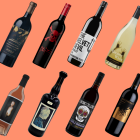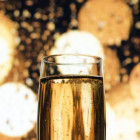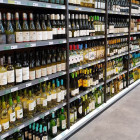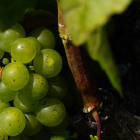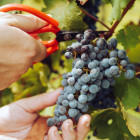Every wine – be it red or white, still or sparkling – is the unique product of an individual recipe and set of processes, so while it’s true to say that wine contains alcohol, such a statement is as vague as saying all wine contains grapes. There’s a great deal more to it than that. Here, we outline the key facts around alcohol in wine, and explore what impact it has on the finished product.
What creates the alcohol in wine?
The presence of alcohol is what ultimately differentiates wine from simple grape juice, and it comes about during the harvesting and fermentation stages of winemaking. As grapes ripen on the vine, they produce sugar as part of a process called veraison. As sugar levels rise, acidity falls, so winemakers have to make a decision on when to harvest the grapes so as to best achieve their desired wine profiles (although this is often entirely out of their hands due to uncontrollable factors such as the weather). Once harvested, the grapes undergo fermentation, where yeast transforms the sugars present in the juice into ethanol (alcohol). So in a nutshell, the higher the sugar levels in the grape, the higher the alcohol levels in the wine.
How is alcohol in wine measured?
Like all alcoholic drinks, alcohol levels in wine are denoted by an ‘ABV’ figure – ‘alcohol by volume’. This is a standard measure of how much alcohol (ethanol) there is within a given volume of the drink, in percentage terms. More specifically, it’s the number of millilitres of pure alcohol present in 100ml of beverage.
How much can alcohol levels vary in wine?
Wine ABV can range from as low as 5.5% to as much as 23%! Generally speaking, wines with this high level of alcohol are classed as fortified wines, such as Madeira and Sherry, and are created by adding additional sugar or spirit to the wine. They’re usually considerably sweeter than non-fortified wines.
The wine’s climate and grape varietal will also have an impact on alcohol levels. Cooler climates make it more challenging for grapes to ripen, so the fruit is often harvested with lower sugar levels (subsequently leading to lower alcohol levels). By contrast, warm and sunny regions allow grapes to ripen for longer on the vine, leading to higher alcohol wines. Some evidence suggests that climate change and its associated temperature increases around harvest time are resulting in higher alcohol wines across the board.
What alcohol levels are typical in each varietal?
Generally speaking, a wine can be sorted into one of four groups based on its alcohol levels. This isn’t an exhaustive list, but it gives you an idea of the impact alcohol can have on a wine’s flavour profile. Higher alcohol wines tend to taste bolder and oilier, while lower-alcohol wines feel lighter. However, it’s worth noting that everyone tastes alcohol differently, and a lot of our perception of alcohol is actually influenced by genetics.
Low alcohol wines – under 12.5% ABV
Italian Asti and Prosecco, Muscadet, German Riesling, Portuguese Vinho Verde, Californian White Zinfandel.
Moderately low wines – 12.5 – 13.5% ABV
French Champagne, Spanish Cava, red and white Bordeaux, New Zealand Sauvignon Blanc, Beaujolais, Spanish Rioja.
High alcohol wines – 13.5% - 14.5% ABV
Australian Chardonnay, Californian Viognier, South African Chenin Blanc, Argentine Malbec, Chilean Merlot, Italian Barolo.
Very high alcohol wines – over 14.5%
Californian Petite Syrah and Zinfandel, plus fortified wines such as Portuguese Madeira, Spanish Sherry and French Muscat de Beaumes-de-Venise.
Does a wine’s alcohol level have any impact on its life expectancy?
In non-fortified wines alcohol is considered volatile, and will turn it to vinegar more quickly than low-alcohol wines. There are some exceptions to this rule, but collectors that purchase dry red and white wines wine with the view to aging them will generally look for an ABV below 13.5%.
It’s also worth noting that a wine’s alcohol level remains constant – contrary to some schools of thought, the alcohol does not ‘evaporate’ over time. However, the way the alcohol is perceived can change over time. As primary flavours fade and secondary flavours flourish, the alcohol can appear to become more or less pronounced.
Does a higher alcohol content equal a better wine?
This is something of a contentious question. It is true that alcohol in wine tends to draw out more intense, bold flavours, so the higher the alcohol level, the fuller the body. Esteemed former wine critic Robert Parker was well known for awarding higher scores to higher alcohol wines, which has no doubt contributed to the idea that bigger is better.
However, lower alcohol wines tend to offer greater balance and pair better with foods – as such it’s not unusual to find gastro-centric restaurants impose a strict 14% ABV limit on their wine lists. Plus, a lower alcohol level means drinkers are able to enjoy slightly more before feeling any debilitating effects! But, as is the case with all wines and their characteristics, what makes them ‘good’ can be very subjective. As long as you enjoy the wine – and drink it responsibly – it doesn’t matter what its alcohol levels are.

